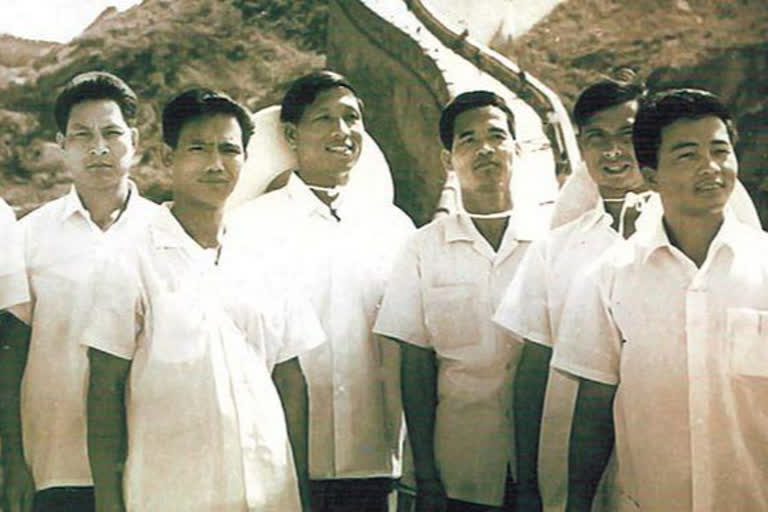New Delhi: With the India-China belligerence out in the open, the fallout would have strong reverberations on the militancy movements of Northeast (NE) India, mainly from Assam, Manipur and Nagaland where there may be unprecedented Chinese involvement from now on given a long history of past associations.
An increased Chinese interest in the NE may come to the aid of the insurgent outfits that had been substantially weakened in recent years. Most groups had been fighting for relevance after decades of incessant fighting against the Indian state.
Several factors make a case for China stepping up its level of activity in India’s Northeast.
Firstly, implicit in the strategy adopted by China dictates the opening as many fronts as possible.
Thousands of Indian Army and Chinese PLA soldiers are being rushed in by road and by aircraft for deployment in the high-altitude border where there is an ongoing faceoff between the world’s two most populous countries, with no immediate signs of de-escalation.
The Indian strategy is to qualitatively and quantitatively buttress its military near its northern frontiers and deploy men and material to the high-altitude areas even as the plan to upgrade infrastructure in these areas is continued on a war-footing.
The Chinese strategy is to slow down the buildup and open up as many fronts as possible along the 3,488 km long common border so that the Indian forces lie spread out.
With new fronts showing their first cracks on the China border across Uttarakhand and Sikkim, another frontage across Arunachal Pradesh—which China claims as its own territory of Southern Tibet—is just a question of time.
But there is another front China will try to exploit—the NE militancy which is spread across several states.
Secondly, there is a history of close association between NE militants and China.
It was in 1967 when the first batch of 133 Naga rebels walked to China through a very difficult route to train in weapons and establish close links with the authorities and Chinese military. Many batches followed the first one.
Similarly, ULFA and the Meitei militants have at different points of time tried to establish contact with the Chinese government. Those mechanisms still exist.
For example, Assam’s main insurgent outfit ULFA’s elusive commander-in-chief Paresh Barua is believed to be residing in Ruili, a border town in China’s Yunnan province famous for its jade mines. Now and then he moves to his jungle headquarters in Myanmar.
The Nagas, the Manipuris and the Assamese militants at one time or the other had looked at China for help and assistance. The close associations of the NSCN, ULFA and the Meitei outfits from Manipur like the PLA, UNLF and PREPAK—that started off with sovereignty and independence as their stated aims—exist even now.
Decades ago when these outfits started off, most of these groups got in touch with Chinese state officials soliciting help. While the Chinese state did not overtly support these groups, they got substantial logistical help and in procurement of weapons from non-state actors that are reported to be proxies of the state.
Thirdly, especially among the Nagas in Nagaland and Manipur and in Assam, there is considerable frustration among the militant factions that are talking to the government at the inordinate delay in thrashing out a final resolution of outstanding issues even after the militants have compromised considerably on their demand for sovereignty.
While talks with the NSCN have been going on for the last 23 years, ULFA talks have been ongoing for 15 years. Both the NSCN and the ULFA leaderships say their respective negotiations with the government have ended, and the ball is in the government’s court.
Certain signs are ominous.
On February 14 this year, about 2,000 Nagas got together in a local festival in Manipur’s Ukhrul and sang songs expressing solidarity with China and the coronavirus battle the Asian giant was waging. It was an expression of frustration with the ‘final solution’ that the Naga talks process with the government was failing to yield to resolve the seven-decade old issue.
This is the linkage China will now look carefully at.
Fourthly, fault lines between the people of the mainland and the NE has seemingly increased in recent times amid tales of racial discrimination, more so with the spreading of the scourge of coronavirus. In many cases, the Mongoloid-looks of the NE people have been equated to having affinity with the Chinese. Interestingly, the Chinese state-owned media has prominently reported on the recent spate of such cases—which is an indication of their interest to prod the issue.
Fifthly, NE militants with China’s tacit support will try to increase recruitment to the ranks especially from among the migrant youth who are returning to the NE to their native homes. With the sudden loss of economic security in the cities and urban centres in the mainland, there will be restiveness among the lakhs of youth who will now be unemployed for all practical purposes. The NE militant outfits will try to exploit it to the hilt.
Sixthly, with the government relentlessly pursuing the idea of India being a sanctuary for all persecuted non-Muslims from the Muslim majority nations of Afghanistan, Bangladesh and Pakistan, the movement in the NE against the Citizenship Amendment Act (CAA) has propagated a widespread belief that New Delhi doesn’t understand them which led to vociferous protests across the states of the NE region. That feeling lies unaddressed.
Seventhly, a low-cost, high-gain proxy war in NE India as a form of hybrid warfare will serve Chinese interests better vis-à-vis India, particularly when India is already engaged in a very expensive proxy war along the Line of Control with Pakistan and in the restive Kashmir Valley.
In this backdrop, New Delhi will do well to aggressively step up the offensive for the hearts and minds in NE India as that seems to be the only way to pre-empt the possible Chinese plan to foment trouble in the NE region.



